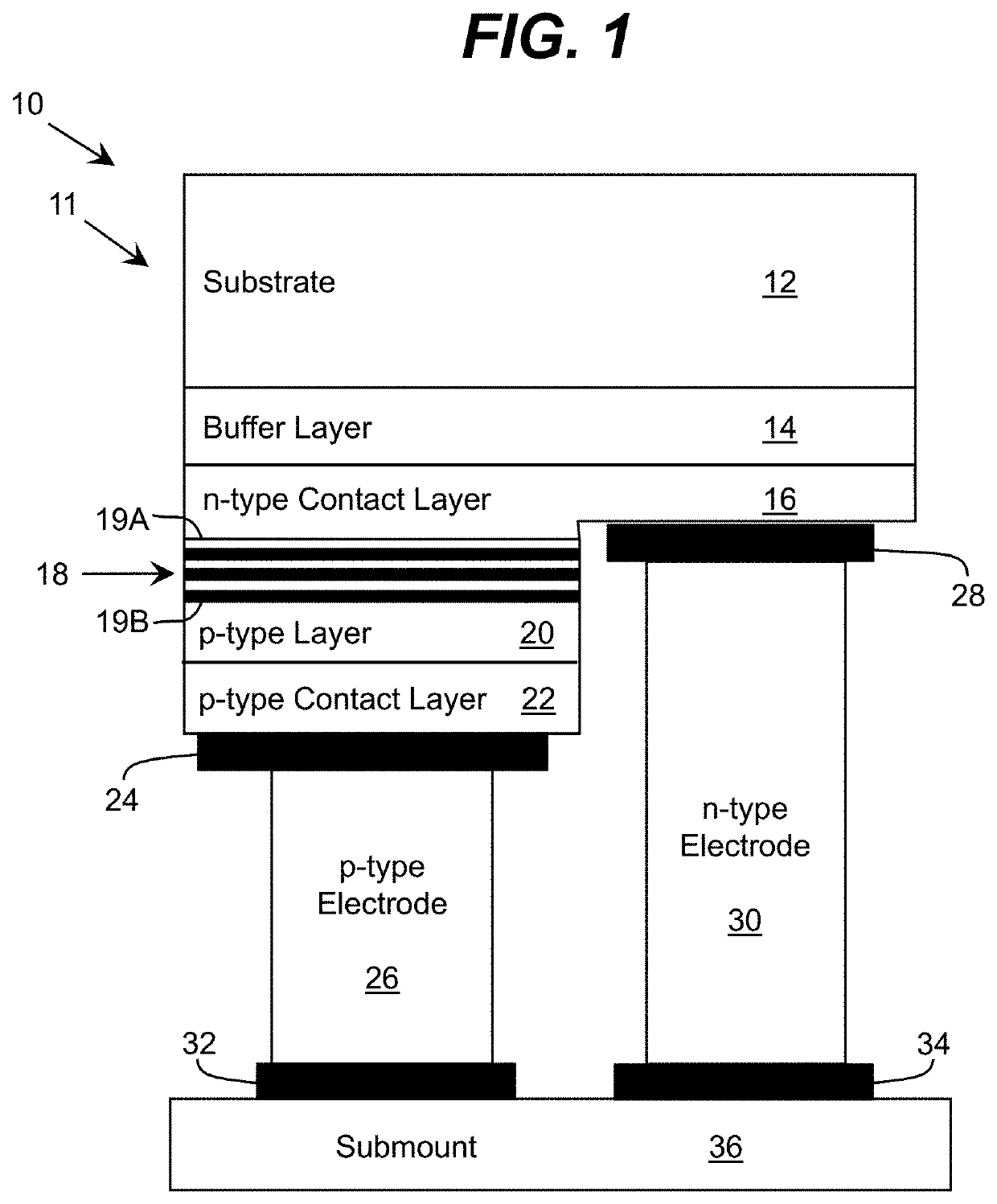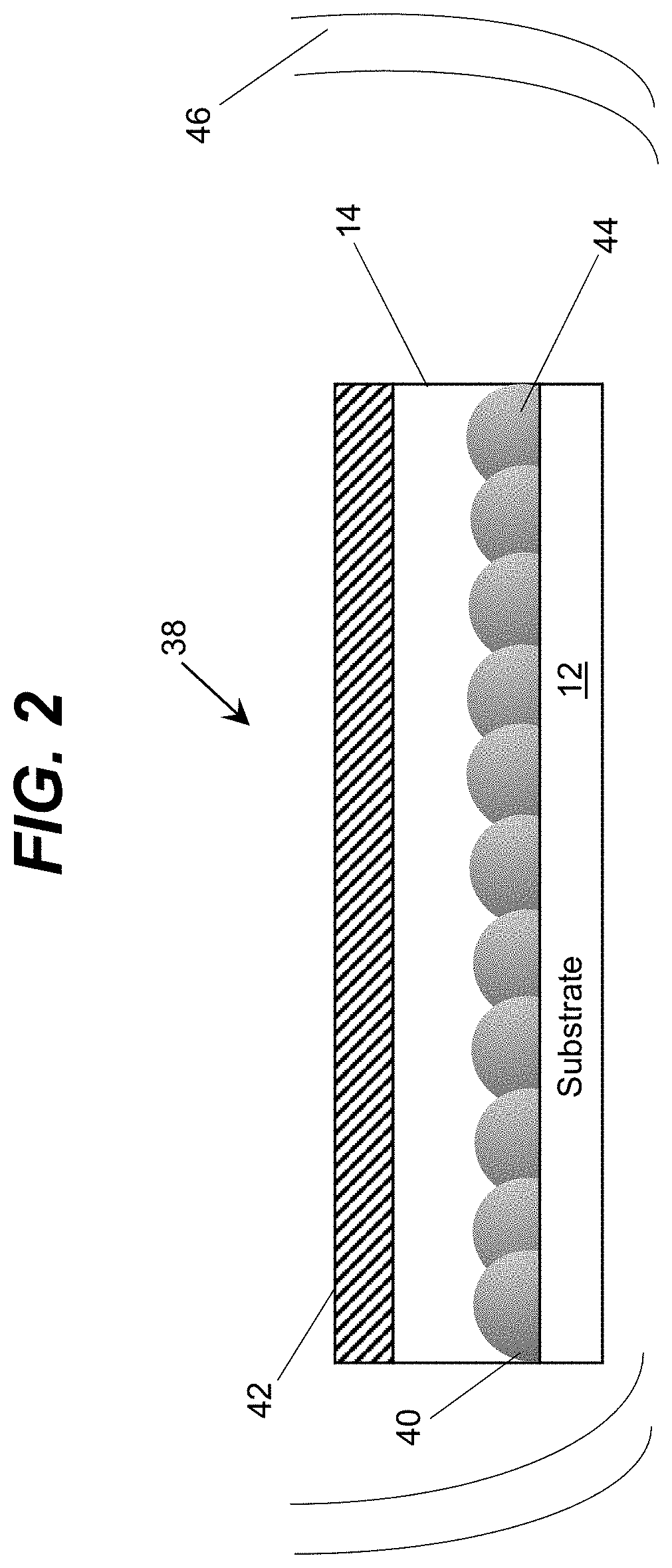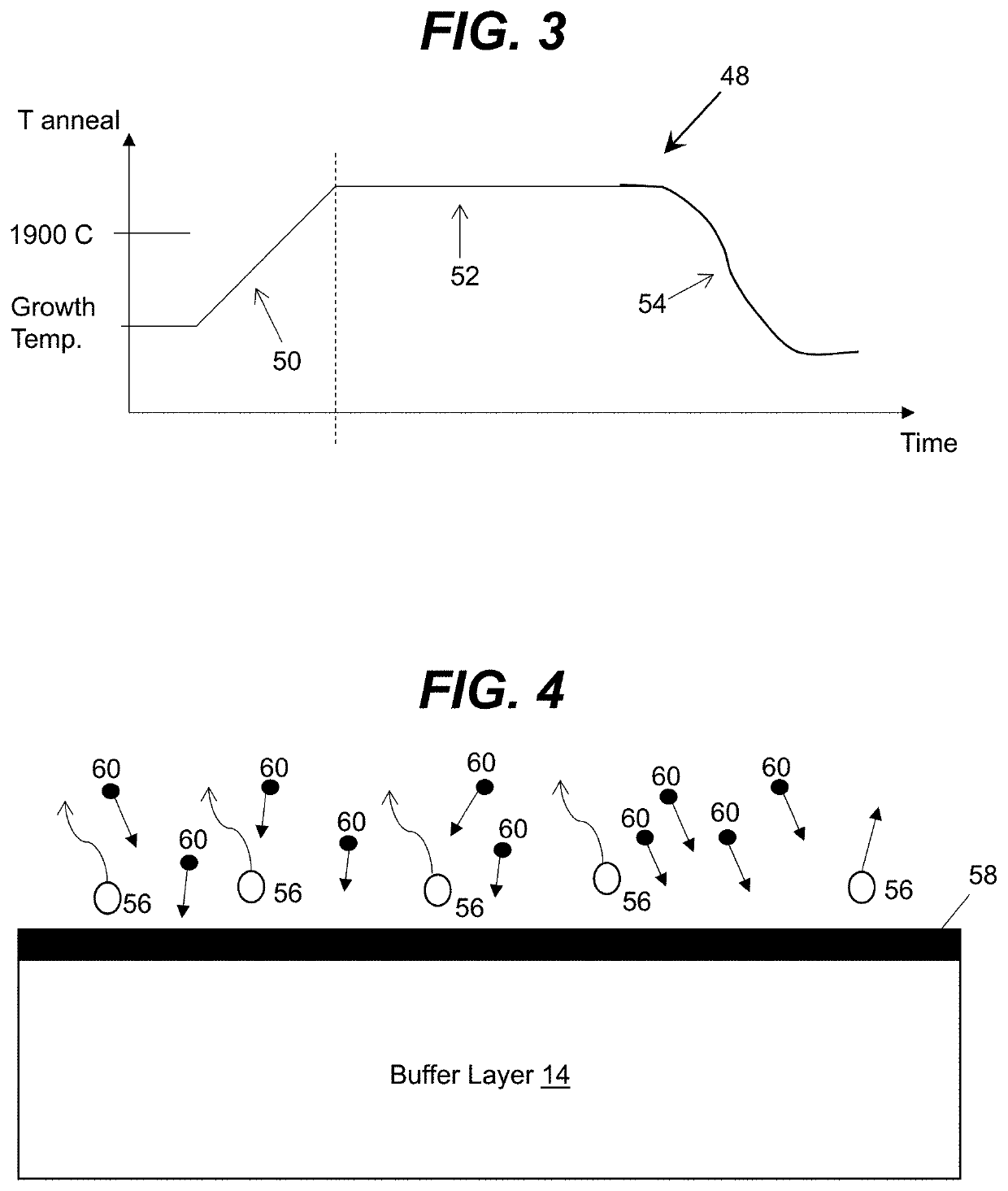Semiconductor method having annealing of epitaxially grown layers to form semiconductor structure with low dislocation density
a semiconductor structure and epitaxial growth technology, applied in the direction of crystal growth process, polycrystalline material growth, chemically reactive gas, etc., can solve the problem of high cost of uv led production in large quantities, and achieve the effect of low cost and low dislocation density
- Summary
- Abstract
- Description
- Claims
- Application Information
AI Technical Summary
Benefits of technology
Problems solved by technology
Method used
Image
Examples
Embodiment Construction
[0043]As indicated above, aspects of the present invention are directed to improving the performance of optoelectronic devices and / or extending the operational lifetime of the devices by annealing semiconductor structures used to fabricate the devices. The annealing minimizes dislocation density and the number of cracks formed in the semiconductor structures, which leads to better optoelectronic device performance and increases the operational lifetime of the device.
[0044]A layer of any of the semiconductor structures described herein can be considered to be transparent to radiation of a particular wavelength when the layer allows an amount of the radiation radiated at a normal incidence to an interface of the layer to pass there through. For example, a layer can be configured to be transparent to a range of radiation wavelengths corresponding to a peak emission wavelength for light, such as ultraviolet light or deep ultraviolet light, emitted by a light generating structure (e.g., ...
PUM
| Property | Measurement | Unit |
|---|---|---|
| radiation wavelengths | aaaaa | aaaaa |
| transparent | aaaaa | aaaaa |
| transparent | aaaaa | aaaaa |
Abstract
Description
Claims
Application Information
 Login to View More
Login to View More - R&D
- Intellectual Property
- Life Sciences
- Materials
- Tech Scout
- Unparalleled Data Quality
- Higher Quality Content
- 60% Fewer Hallucinations
Browse by: Latest US Patents, China's latest patents, Technical Efficacy Thesaurus, Application Domain, Technology Topic, Popular Technical Reports.
© 2025 PatSnap. All rights reserved.Legal|Privacy policy|Modern Slavery Act Transparency Statement|Sitemap|About US| Contact US: help@patsnap.com



